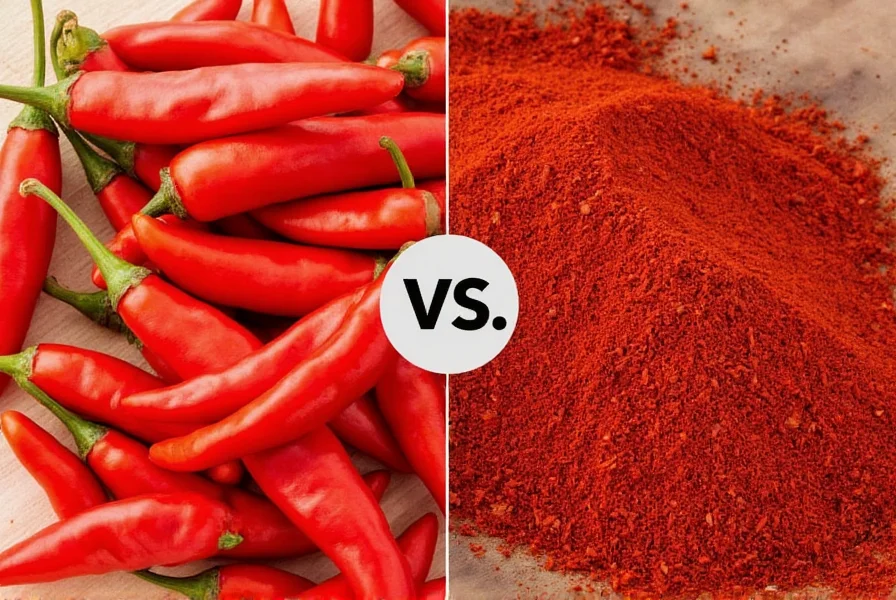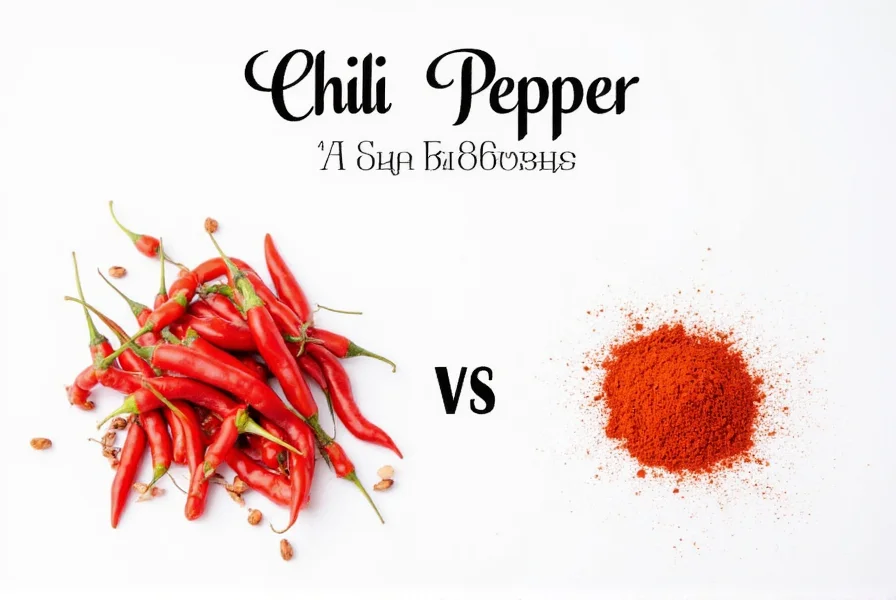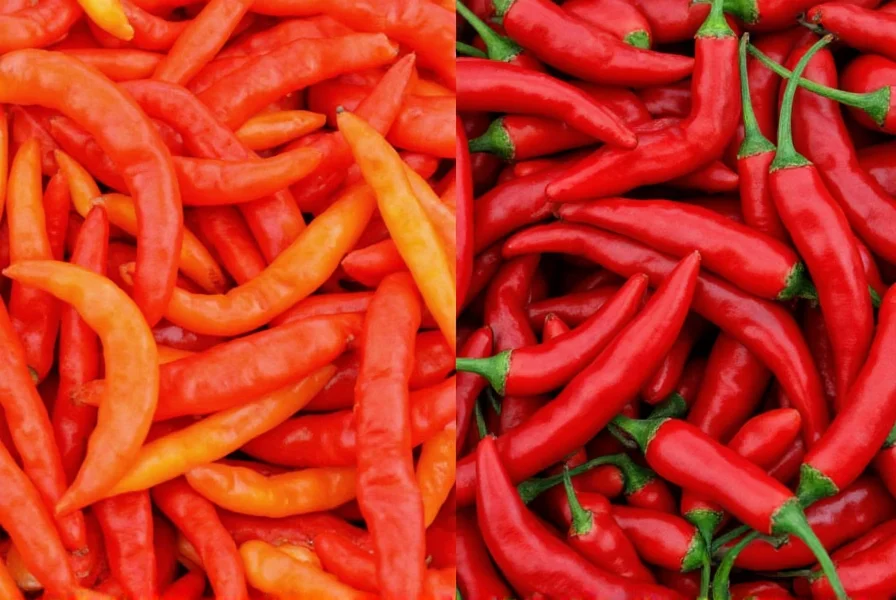Many home cooks and even experienced chefs confuse chili peppers and cayenne peppers, often using the terms interchangeably. This misunderstanding stems from inconsistent labeling in grocery stores and recipe instructions. Understanding the precise relationship between these ingredients prevents culinary mishaps and ensures proper heat levels in your dishes.
What Exactly Are Chili Peppers?
Chili peppers represent a vast category within the Capsicum genus, encompassing hundreds of varieties that range from mild bell peppers (0 Scoville units) to extremely hot ghost peppers (855,000-1,041,427 Scoville units). This broad classification includes:
- Family: Solanaceae (nightshade family)
- Species: Primarily Capsicum annuum, but also C. chinense, C. frutescens, and others
- Heat range: 0 to over 2 million Scoville Heat Units (SHU)
- Color variations: Green, red, yellow, orange, purple, and brown
When recipes call for "chili peppers" without specification, they typically refer to moderately hot varieties like jalapeños (2,500-8,000 SHU) or serranos (10,000-23,000 SHU), not the entire spectrum of chili varieties.
Defining Cayenne Pepper: More Than Just a Name
Cayenne pepper specifically refers to matured, dried, and ground Capsicum annuum fruits that measure 30,000-50,000 on the Scoville scale. The confusion often arises because:
- "Cayenne" describes both the fresh pepper and its ground form
- Many grocery stores label generic hot red pepper flakes as "cayenne"
- Culinary traditions vary in their definitions across different regions
True cayenne peppers grow 2-5 inches long, taper to a point, and turn from green to vibrant red when mature. They originated in French Guiana near the Cayenne River, which gave them their name.
| Characteristic | Chili Peppers (General) | Cayenne Peppers (Specific) |
|---|---|---|
| Heat Level (Scoville) | 0-2,000,000+ SHU | 30,000-50,000 SHU |
| Physical Form | Fresh peppers, flakes, powders | Typically ground powder or dried whole |
| Color | Green, red, yellow, orange, purple | Consistently bright red |
| Culinary Role | Varies by variety (mild to extreme heat) | Consistent medium-high heat source |
| Substitution Flexibility | Highly variable | Narrower substitution range |
Practical Culinary Applications
Understanding the difference between chili pepper vs cayenne prevents recipe disasters. Consider these practical applications:
When a recipe specifies cayenne pepper, it requires that distinctive sharp, immediate heat that registers quickly on your palate. This makes cayenne ideal for:
- Creole and Cajun seasoning blends
- Adding quick heat to soups and stews
- Commercial hot sauces requiring consistent heat
- Dry rubs for meats where immediate heat penetration matters
When a recipe calls for chili peppers (fresh), it usually seeks more complex flavor profiles beyond just heat. Different varieties contribute unique characteristics:
- Jalapeños: Bright, grassy notes with moderate heat
- Guajillo: Berry-like flavor with mild heat
- Chipotle: Smoky depth from smoked jalapeños
- Habanero: Fruity undertones with intense heat

Common Substitution Scenarios
Knowing whether you're working with cayenne vs chili pepper determines appropriate substitutions. Many cooks ask can I substitute cayenne for chili powder—the answer depends on context.
When substitutions work:
- Replace 1/4 teaspoon cayenne with 1/2 teaspoon crushed red pepper flakes (adjust for heat preference)
- Use smoked paprika (1:1 ratio) when you need color without intense heat
- Combine mild chili powder with a pinch of cayenne to recreate specific heat profiles
When substitutions fail:
- Using pure cayenne in place of ancho chili powder (completely different flavor profile)
- Substituting fresh jalapeños for cayenne powder in dry rubs (moisture content changes texture)
- Replacing cayenne with bell peppers in recipes requiring significant heat

Addressing Common Misconceptions
Several persistent myths confuse the chili pepper vs cayenne distinction:
Misconception: "Cayenne and red pepper flakes are identical"
Reality: While both come from Capsicum annuum, cayenne refers specifically to a single pepper variety ground fine, while red pepper flakes typically contain multiple chili varieties with seeds and membranes.
Misconception: "Chili powder is just ground cayenne"
Reality: Commercial chili powder usually contains a blend of mild chili peppers (like ancho), cumin, garlic powder, and oregano—cayenne might be a minor component but isn't the primary ingredient.
Misconception: "All hot red peppers are cayenne"
Reality: Many hot red peppers (like Thai chilies or bird's eye chilies) belong to different Capsicum species and have distinct flavor profiles despite similar appearance.
Practical Storage and Usage Tips
Maximize freshness and potency with these evidence-based storage recommendations:
- Store dried cayenne pepper in an airtight container away from light (retains potency for 6-12 months)
- Freeze fresh cayenne peppers for up to 6 months without significant flavor degradation
- Add ground cayenne early in cooking for infused heat, or at the end for brighter, sharper heat
- Wear gloves when handling fresh cayenne peppers to avoid skin irritation
Understanding the precise difference between chili pepper vs cayenne transforms your cooking accuracy. While cayenne represents a specific chili variety with consistent heat properties, the term "chili pepper" encompasses a diverse family with varying characteristics. This knowledge prevents recipe failures and helps you make informed substitutions based on actual heat requirements and flavor profiles rather than guessing.











 浙公网安备
33010002000092号
浙公网安备
33010002000092号 浙B2-20120091-4
浙B2-20120091-4